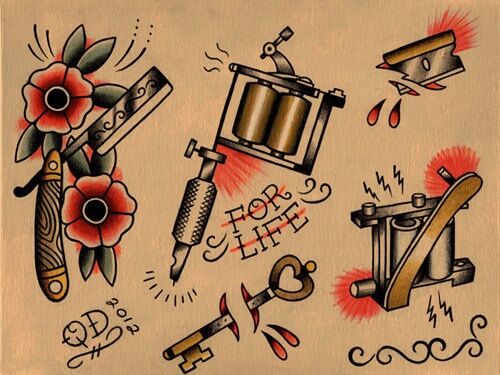Vieira: This is the inside of me, outside
February 9, 2021
Body modifications have been around for centuries, like neck stretching in southeast Asia or piercings, which are popular among African cultures. These types of alterations sometimes symbolize someone’s status within society or their financial prosperity. Alternatively, in some cases, they are associated with magic or the spiritual realm. Tattooing is another type of practice that dates back to ancient cultures such as the Egyptians. When archeologists discovered the mummy of Amunet, a priestess of the goddess Hathor in Thebes, they noticed a series of markings along the lower half of her body, thought to symbolize sexuality and fertility. Researchers estimated the body to belong to the Predynastic Period (c. 6000 – c. 3150 BCE), which puts us in perspective as to how long tattoos have been around.
But why do we call them “tattoos?” How did this word come about? The term was coined around 1769 after James Cook reported islanders using the word “tatau,” which was later adapted to English, hence, here we are today. After sailing through the Pacific and being exposed to this brand new art form, many sailors began to pick up Polynesian trends and started getting tattooed themselves.
The first known American tattoo artist was C.H. Fellowes, who would travel with sailor fleets and set up shop wherever they ported. Later in the 19th century, a man named Martin Hildebrandt sparked the tattoo craze in the United States. He was a sailor who joined the Army after the Civil War broke out and began tattooing soldiers. I believe it is worth mentioning that Hildebrandt had no prejudice against which side the lads stood for; he would tattoo both Northerners and Southerners. He mentions never having a dull moment, everybody wanted a piece from him. Following his dismissal of the armed forces, Martin Hildebrandt and his wife moved to New York after the Civil War ended. There, they opened the first-ever tattoo shop in lower Manhattan around 1870.
The tools used to tattoo were rather rudimental, for artists to transfer their designs onto their “canvas,” they had to go through a tedious, time-consuming process. Drawings were essentially “carved into wooded blocks, and then printed onto the skin by dipping the block into ink. Then tattooists would use a single needle and puncture by hand with blank ink into the skin.” It was not until 1880 that Samuel O’Reilly introduced the tattoo machine. Inspired by Thomas Edison’s blueprints for an engraver, O’Reilly created the first-ever “electric pen” by simply adding an ink reservoir to the original prototype. The Irish American forever revolutionized tattooing, making the whole process faster and allowing artists to draw cleaner, sharper lines.
Naturally, tattoos were abundant in postwar America, allowing them to finally start to be recognized as an art form and a way of self-expression. However, the practice remained taboo in the elite society because of tattoos’ association with promiscuity and crime. In spite of the art form being frowned upon by some, it never stopped people from being heavily inked. Men and women who decided to tattoo most of their bodies began to convert it into an attraction, joining circuses and partaking in “freak shows.” After postcards and photographs of the events started circulating through the country, the art form gained even more popularity.
Women were part of the movement too. They got tattoos to show their independence since freak shows attracted a large crowd, they also paid well. My personal favorite inked woman is, hands down, Mildred Hull. “The queen of bowery” was initially a burlesque dancer in the circus and eventually became a tattooed lady. After being in the circus business for a while, she taught herself how to tattoo by practicing on her own skin. Besides being a talented artist and a strong, independent woman, she was also an entrepreneur. In 1939, Hull opened a studio behind a barbershop, making her the first female tattoo shop owner. “A barbershop with a clean space, a male customer base, and a corner for rent was reason enough,” she argued.
Overall, it may be said that tattoos are an art form that endured decades of pushback and rejection from society but thrived despite it all. Tattoos take “wearing your heart on your sleeve” to the literal sense; we all become open books, one inked nation.







